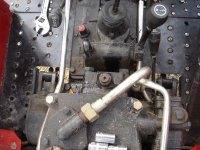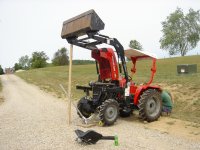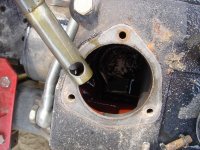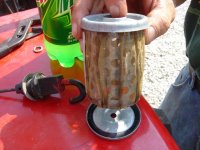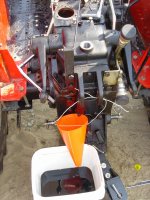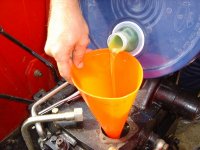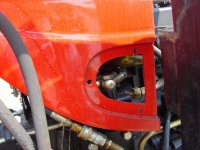cjax
New member
Ok, bought a used (less than 80 hours) JM254 last weekend. Used it for about 2 hours, and it has done everything I need so far. Only problem is, the power steering is/was sluggish at best. I do a lot of turning, as I have an oddly shaped lot (though 20 acres) and a lot of hills.
About 1.5 hours into my work, I started to smell something odd (to me), but nothing was smoking, the gauges were all good, and it was still running. (Yes, I'm somewhat of a tractor newbie) Drove her back to her resting place, and noticed what I believe to be hydraulic fluid all over the right side of the engine and sprayed a little down toward the front right wheel. (I'll try to get a pic).
As I don't have a manual or any schematics, any thoughts? I'm guessing the PS shares the hydraulics and doesn't have it's own system. Would it be possible to put the PS on it's own to not overload the hydraulics? Does anyone have any drawings/schematics/manuals that I could use to try and work on this? I can find my way around things, but somewhat new to the hydraulics world.
Any information greatly appreciated.
CJ - Diesel newbie
About 1.5 hours into my work, I started to smell something odd (to me), but nothing was smoking, the gauges were all good, and it was still running. (Yes, I'm somewhat of a tractor newbie) Drove her back to her resting place, and noticed what I believe to be hydraulic fluid all over the right side of the engine and sprayed a little down toward the front right wheel. (I'll try to get a pic).
As I don't have a manual or any schematics, any thoughts? I'm guessing the PS shares the hydraulics and doesn't have it's own system. Would it be possible to put the PS on it's own to not overload the hydraulics? Does anyone have any drawings/schematics/manuals that I could use to try and work on this? I can find my way around things, but somewhat new to the hydraulics world.
Any information greatly appreciated.
CJ - Diesel newbie
